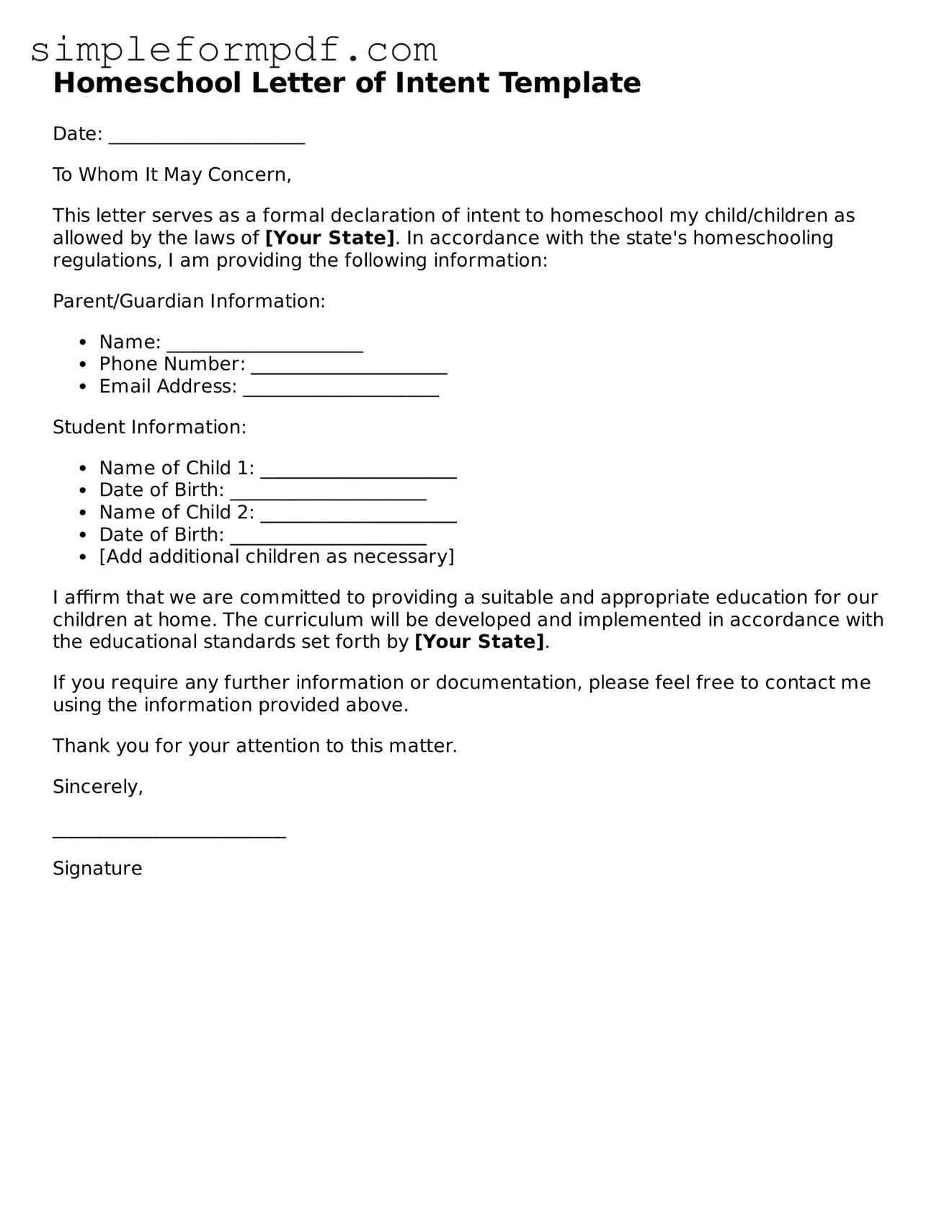Homeschool Letter of Intent Template
Date: _____________________
To Whom It May Concern,
This letter serves as a formal declaration of intent to homeschool my child/children as allowed by the laws of [Your State]. In accordance with the state's homeschooling regulations, I am providing the following information:
Parent/Guardian Information:
- Name: _____________________
- Phone Number: _____________________
- Email Address: _____________________
Student Information:
- Name of Child 1: _____________________
- Date of Birth: _____________________
- Name of Child 2: _____________________
- Date of Birth: _____________________
- [Add additional children as necessary]
I affirm that we are committed to providing a suitable and appropriate education for our children at home. The curriculum will be developed and implemented in accordance with the educational standards set forth by [Your State].
If you require any further information or documentation, please feel free to contact me using the information provided above.
Thank you for your attention to this matter.
Sincerely,
_________________________
Signature
